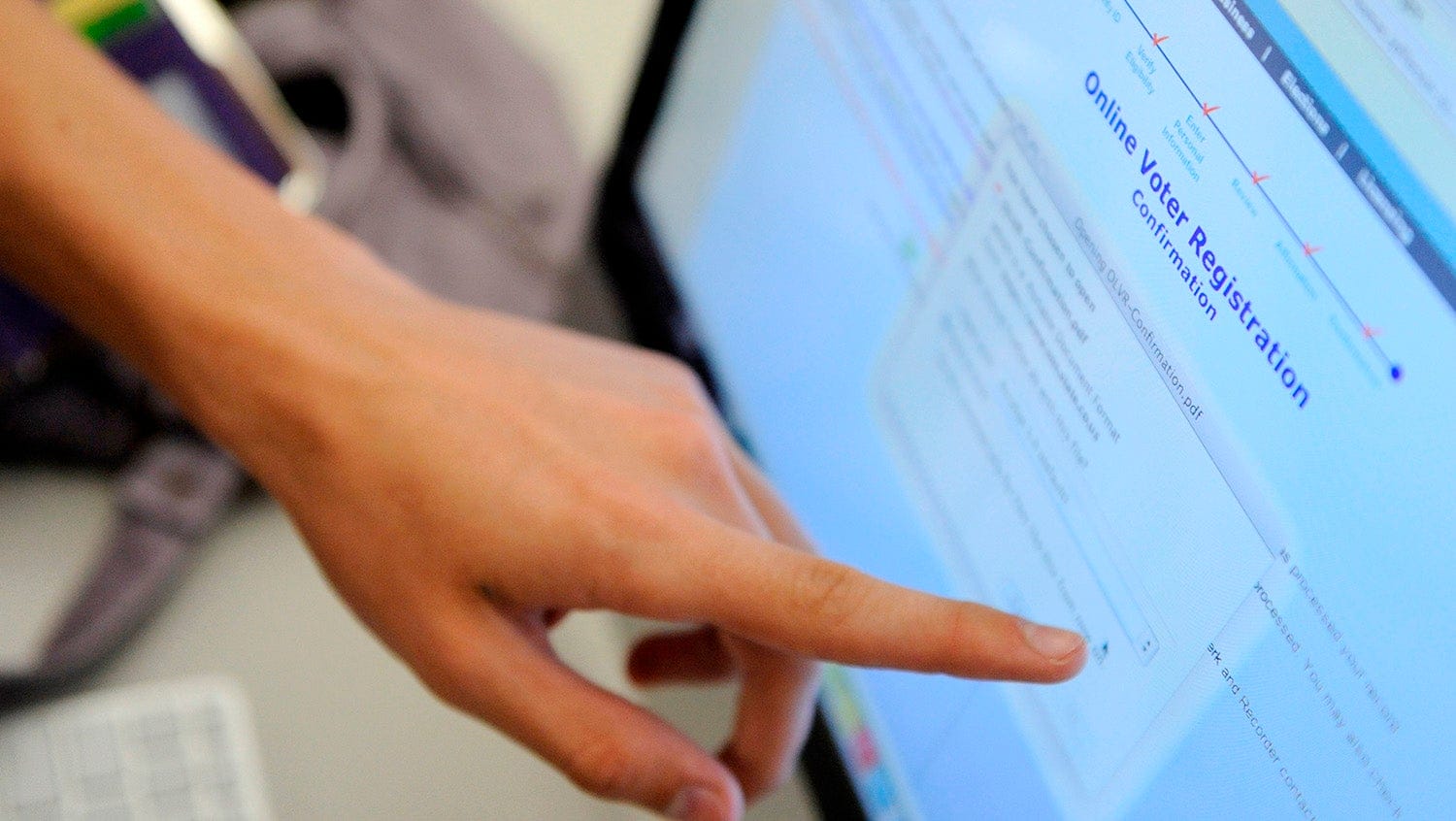Voter Registration for Patients During Pediatric Well Child Visits
October 23, 2020

Getty Images
Increasing voter registration in underrepresented communities has the potential to reduce racial disparities, improve community health, and better distribute state and federal resources.
“Can we really do this right now?” asked Mark, an 18-year-old patient, with a surprised look on his face. Following a series of questions about general health and social habits, his pediatrician had asked him if he was registered to vote in the upcoming election. When he said no, the physician offered to help Mark complete his registration during the clinic visit that same day.
The ensuing discussion highlighted the connection between civic engagement and health, and offered Mark a new perspective of voting as a meaningful part of his development that lets his voice be heard on issues that could directly and indirectly affect his health — like climate change, student loan debt, gun ownership, and access to health insurance.
Voting access as a social determinant of health
Over the last several years, pediatricians have developed tools to address social needs such as housing or food access during well visits, acknowledging their relationship to overall health. Pediatric trainees have also increasingly embraced their role as patient advocates, and many training programs have incorporated advocacy-based education alongside clinical training. It is well established that screening families for social needs during a pediatric visit and subsequently referring them to community-based organizations increases the likelihood that families will receive necessary resources.
Approaching voting with the same strategy of screening and connecting to resources appears to produce a similar improvement in access for patients. In a pilot program published earlier this year that introduced voter registration in a primary care clinic, two-thirds of the patients who were not registered to vote agreed to register in the clinic. And 94% of the patients who registered and subsequently voted in the following midterm election said that registering in clinic was a motivating factor in their decision to vote.
The pediatric well-child visit is comprehensive, covering vaccinations, laboratory screenings, anticipatory guidance, and developmental evaluation of important milestones. In the adolescent years, visits expand to include discussions about important social developmental milestones, including emerging autonomy, identity formation, and vocational and educational trajectories. Given the longitudinal and personal relationships pediatricians develop with their patients, we are well situated to provide meaningful counseling and modeling around voting behavior, as well.
Discussing voter registration with our adolescent and young adult patients in clinic can increase their access to vital information about voting and empower them to increase their civic engagement and connection to their communities — which is a part of healthy development, growing literature suggests. Voting and activism in late adolescence is significantly associated with decreased risky health behaviors and depressive symptoms, as well as higher future personal and household incomes. It appears that civic engagement has these health impacts by improving social mobility, professional skills, and self-esteem, and by broadening exposure to social resources that can contribute to overall health improvement. Beyond the act of voting, the impact of voting (on legislation and policy) also influences patients’ health trajectories.
However, a minority of young adults regularly engages in this civic process: In the 2016 election, for example, only 39% of potential voters between the ages of 18 and 24 years old reported voting.
Voting, healthcare, and racial and economic disparities
Voter suppression disproportionately affects people of color and contributes to healthcare inequities due to the symbolic and literal designation of whose voices matter most. Advocacy and voting on legislation and policy that impacts access to healthcare, medication, stable income, fresh and healthy foods, and other factors is crucial to creating an environment for thriving.
But the issue goes beyond suppression. White adults vote at higher rates than their Black, Latinx, and Asian counterparts, and areas with low household incomes and poor residential mobility often have low voter turnout. Perhaps as a consequence, young adults whose parents are well-educated and wealthy have been shown to have a higher likelihood of voting in their first eligible election, an act significantly tied to their likelihood of voting in subsequent elections.
However, adolescents whose parents don’t have these socioeconomic advantages may not have the same exposure and modeling of political engagement. Without adolescents’ opportunity to develop political interest themselves, disparities in political representation for marginalized communities could worsen.
We believe easing access to voter registration is essential to reducing voting disparities, which closely mirror disparities in healthcare access and outcomes. In addition to advocating on behalf of patients, our encouraging patients to vote allows patients to advocate for themselves and make their own voices heard. Increasing voting opportunities in traditionally underrepresented communities has the potential to improve community health, improve distribution of resources, and reduce disparities.
How to: Counseling on voting and registration during COVID-19
While obstacles to voter registration have existed for decades, we would be remiss to overlook the unprecedented challenges that have arisen during the COVID-19 pandemic. Adolescents and young adults who might have been automatically registered through their local Department of Motor Vehicles office or had the opportunity to register in school likely do not have those points of access currently. Additionally, patients and providers may have concerns regarding exposure to the virus while voting during a pandemic. Mail-in voting is not universally accessible in all states, and many voters may question whether the benefit of voting in person outweighs the risks of becoming ill. Among confusion and conflicting information, the pediatrician’s role in discussing voter registration and easing access to registration during this time is even more important.
Easing access to voter registration is essential to reducing voting disparities
We can encourage healthy development and protect the health of our patients by familiarizing them with online voter registration and the mail-in-voting protocols in their region. The American Academy of Pediatrics (AAP) has encouraged health professionals to educate patients about voting in a nonpartisan way, and has promoted the use of Vot-ER, a web-based registration portal, to allow patients a safe, contactless, nonpartisan opportunity to register to vote.
As pediatric trainees, we have learned that our role extends beyond interpreting lab values and physical exam findings, to empowering our patients’ social development and emphasizing the positive impacts of connection with their community. We have an obligation to help our patients make their voices heard throughout their adult lives, on issues that can directly impact their health, their families, and their communities.


